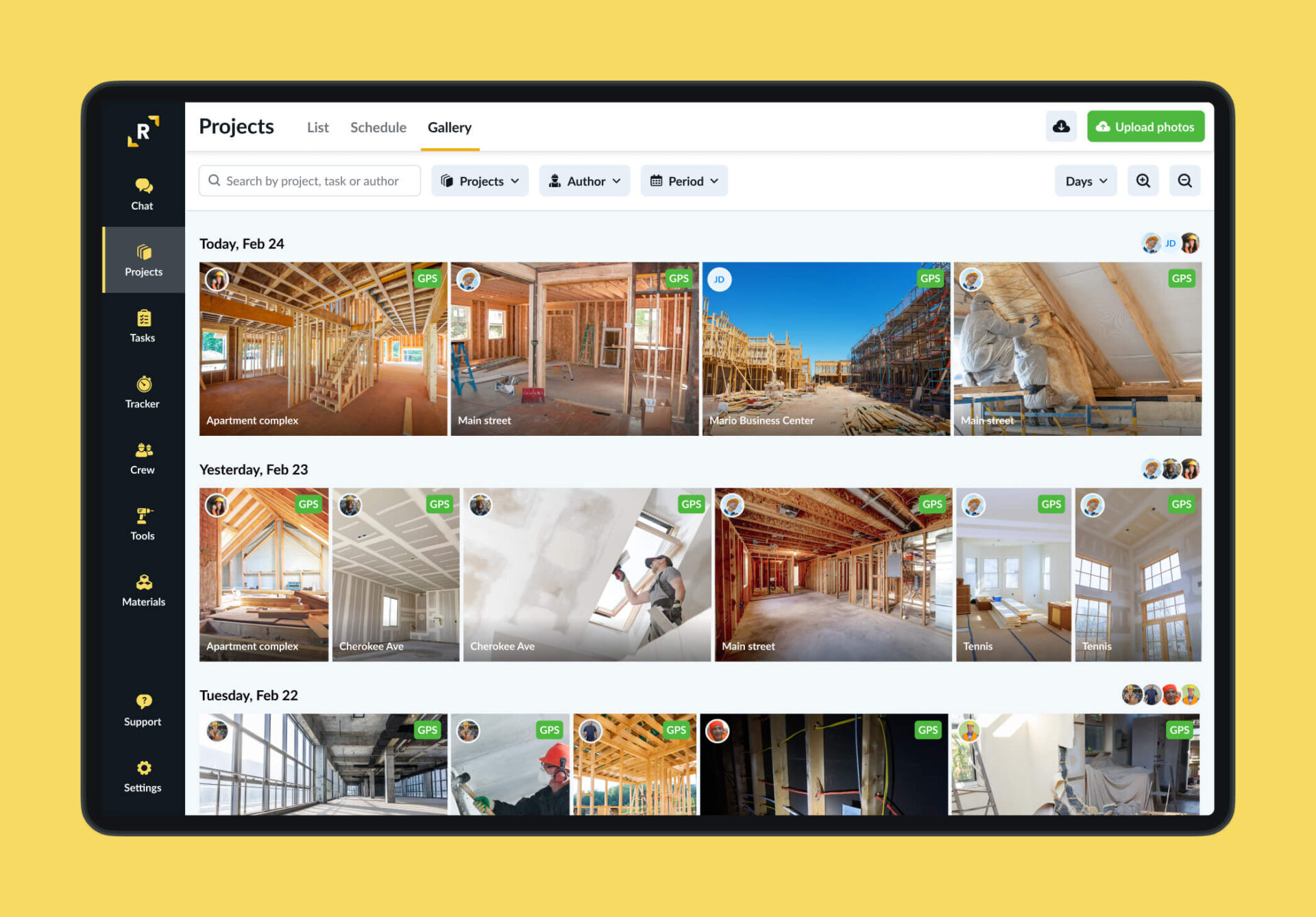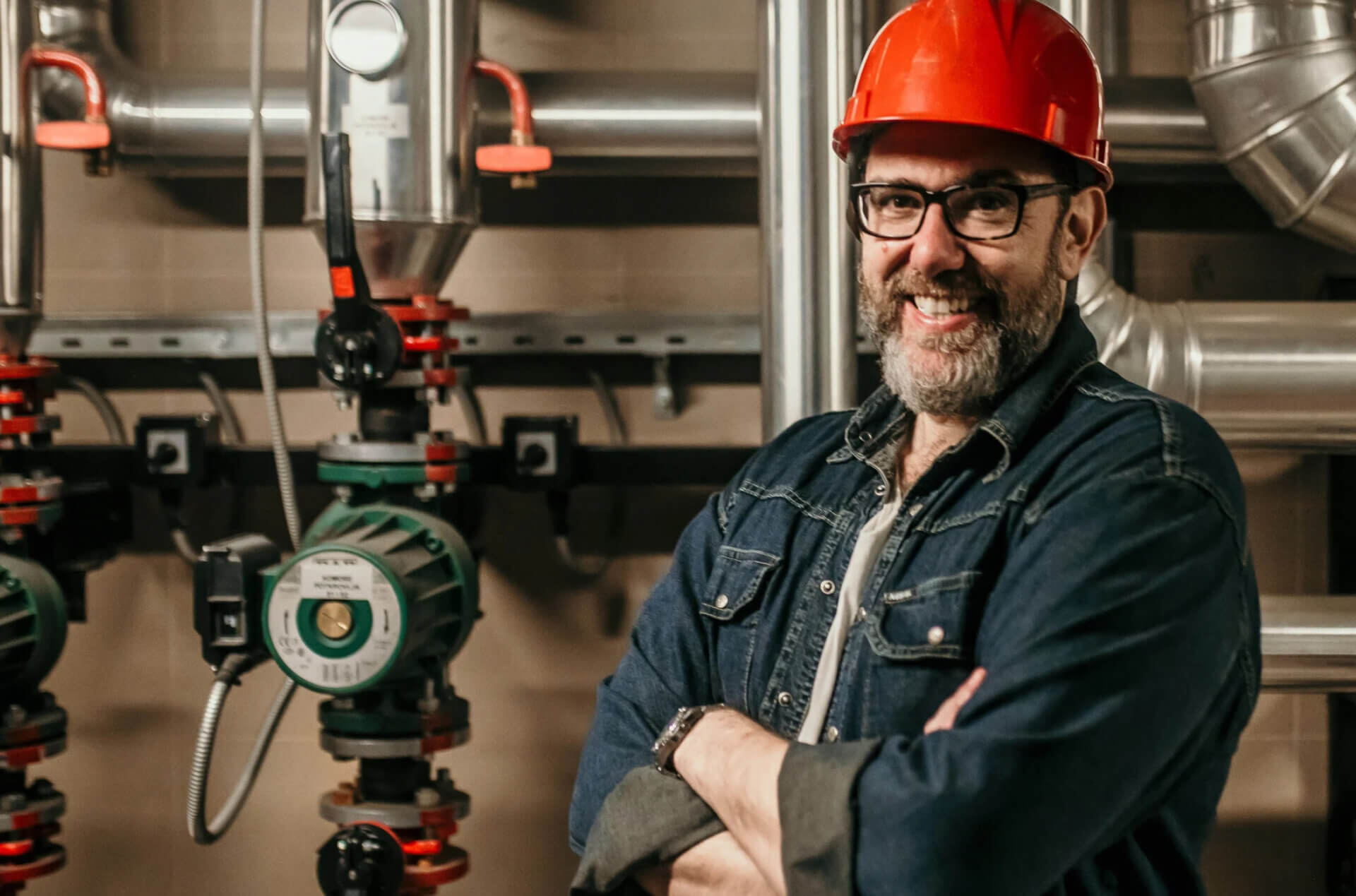5 Types of Photos Every Plumbing Company Should Capture on the Job Site
In the world of plumbing projects, photo documentation isn’t just helpful—it’s essential. From tracking hidden pipework to verifying fixture installations, the right photos help teams stay organized, avoid disputes, and deliver quality work.
In our last article, 5 Types of Photos Every Electric Company Should Capture on the Job Site, we covered how electricians benefit from structured jobsite photography. This time, we’re focusing on plumbing contractors—and the five key types of photos your team should be capturing on every job site.
Whether you’re working on residential builds, commercial retrofits, or emergency repairs, these photos will help you save time, reduce callbacks, and show your work with confidence.
Table of Contents
1. Pre‑Work Jobsite Conditions
Before a single pipe is cut or fixture is unboxed, it’s important to document the initial state of the job site. This helps your team understand what they’re walking into and protects your company if questions or disputes arise later.
Capture wide shots and close‑ups of:
- Existing plumbing lines, shut‑off valves, and access points
- Damaged or corroded pipes that may need replacement
- Wall, floor, or ceiling conditions before any demo
- Any potential hazards or obstacles (tight crawlspaces, water damage, etc.)
Whenever possible, include a job tag, address marker, or GPS metadata to tie the photo to a specific location. These images are especially useful during handoffs between teams, change orders, or warranty discussions.
2. Materials & Fixtures Upon Arrival
Before installation begins, take clear photos of all incoming materials and fixtures. This ensures you’ve received the correct items in the right condition—and provides proof if anything arrives damaged or incomplete.
Capture:
- Boxes of fittings, pipe bundles, shut‑off valves, and seals
- Water heaters, toilets, sinks, and tubs — ideally still in packaging
- Serial numbers or product labels for big-ticket items (e.g., boilers, pumps)
- Delivery tags or packing slips next to the products
These photos help track inventory, confirm deliveries, and support warranty claims. They also create a clean visual record of what was delivered and when—especially helpful for larger or multi-phase jobs.
3. In‑Progress Work
As installation gets underway, regular photo documentation helps track progress, communicate clearly with off-site stakeholders, and spot issues before they escalate. These images serve as a timeline of your team’s work—especially valuable for long or complex projects.
Capture:
- Pipe runs before walls or floors are closed up
- Pressure testing setups (with gauges visible)
- Installed vent stacks, drain lines, or PEX manifolds mid-install
- Trenching or underground work before backfill
- Any deviations from plans or site conditions requiring field adjustments
Make sure to shoot from multiple angles, and consider including a measuring tape or level in frame to show dimensions and compliance. These photos are useful for internal reviews, inspections, and keeping clients updated—even if they’re off-site.
4. Completed Work
Once your plumbing installation is finished, it’s time to capture clear, well-lit photos of the final result. These images showcase the quality of your work, help close out the project professionally, and serve as documentation for clients, inspectors, or future service calls.
Capture:
- Installed fixtures: sinks, toilets, faucets, water heaters, etc.
- Properly labeled shut-off valves and access panels
- Final pipe routing and insulation (where visible)
- Clean-up of the job area — show that you left it in top condition
These photos aren’t just for show—they can support invoicing, code compliance, and even marketing (if the project looks sharp). Match them with any final inspection checklists to create a solid handover package.
5. Safety Compliance & Site Conditions
Safety on plumbing job sites isn’t optional—it’s essential. Taking photos of how your team maintains a safe work environment helps protect your company in case of incidents, inspections, or liability claims.
Capture:
- Team members wearing proper safety gear such as gloves, safety glasses, protective footwear, and hard hats
- Clearly marked hazards like wet floors, open trenches, or tight crawlspaces
- Lockout/tagout procedures for water heaters, boilers, or pressurized lines
- Permit boards, jobsite signage, and temporary barriers
- Weather-related risks such as flooding, ice, or extreme heat
These images demonstrate that your company takes safety and compliance seriously, and they can be vital during audits, inspections, or insurance reviews. A few quick photos at the right moment can go a long way toward proving diligence and professionalism.
Bonus Tip: Organizing and Tagging Photos

Capturing great photos is only half the equation—keeping them organized and easy to find is just as important. That’s why using the right tools matters.
With Remato, all your jobsite photos are:
- Automatically linked to the correct project and team
- Time-stamped and location-tagged with GPS
- Instantly accessible from the office or field without needing manual sorting
This means your team can focus on getting the right shots, while Remato handles the structure in the background.
Final Thoughts
Plumbing work often gets hidden behind walls, under floors, or underground—making clear photo documentation one of the most valuable tools in your toolbox. From pre-work conditions to final installations, the right photos help you protect your business, improve communication, and deliver better results on every job.
As with any trade, it’s not about taking more photos—it’s about taking the right ones at the right time. Use these five categories as a checklist, and make it easy for your team to stay consistent by using a system that organizes photos by project, date, and location.
If you missed the first article in this series, be sure to check out:
5 Types of Photos Every Electric Company Should Capture on the Job Site
